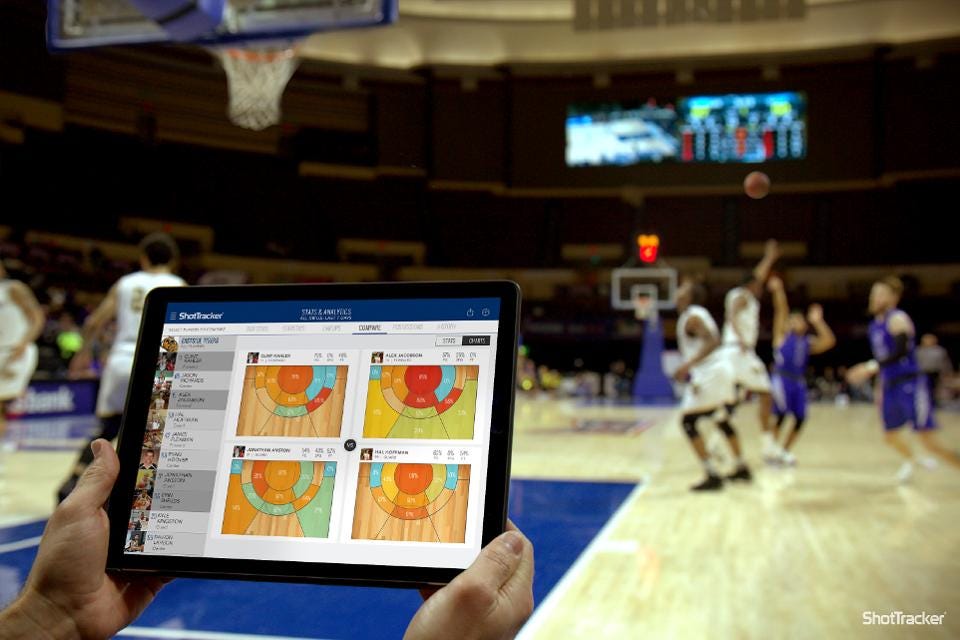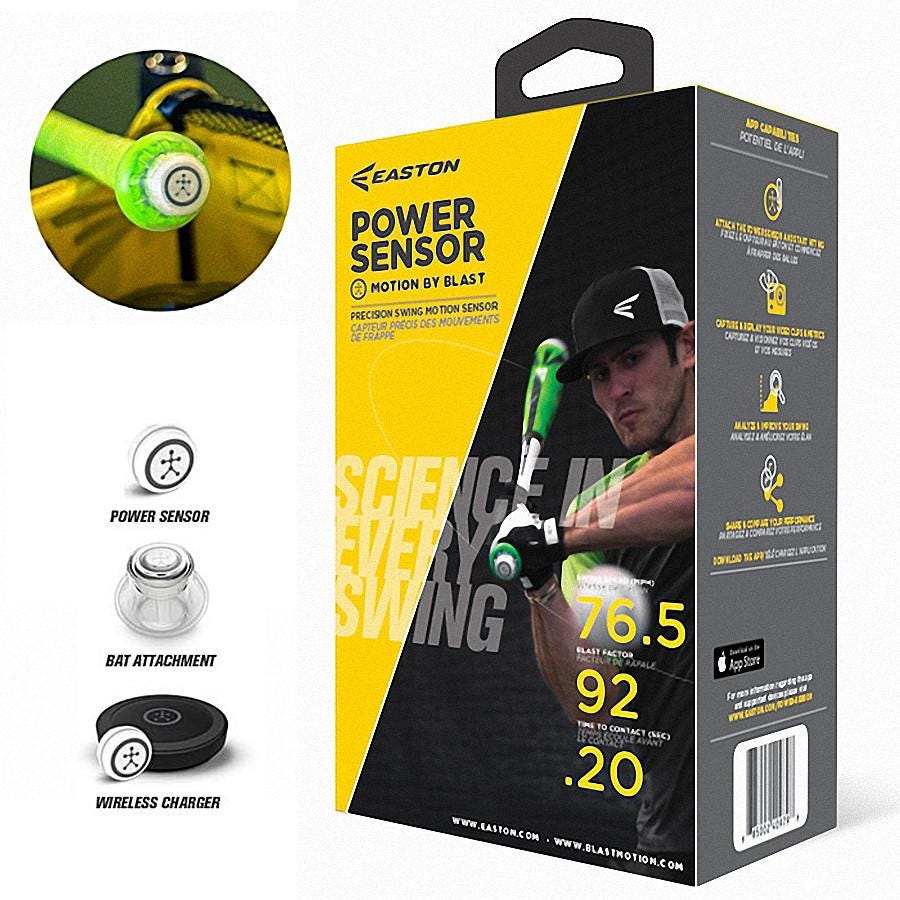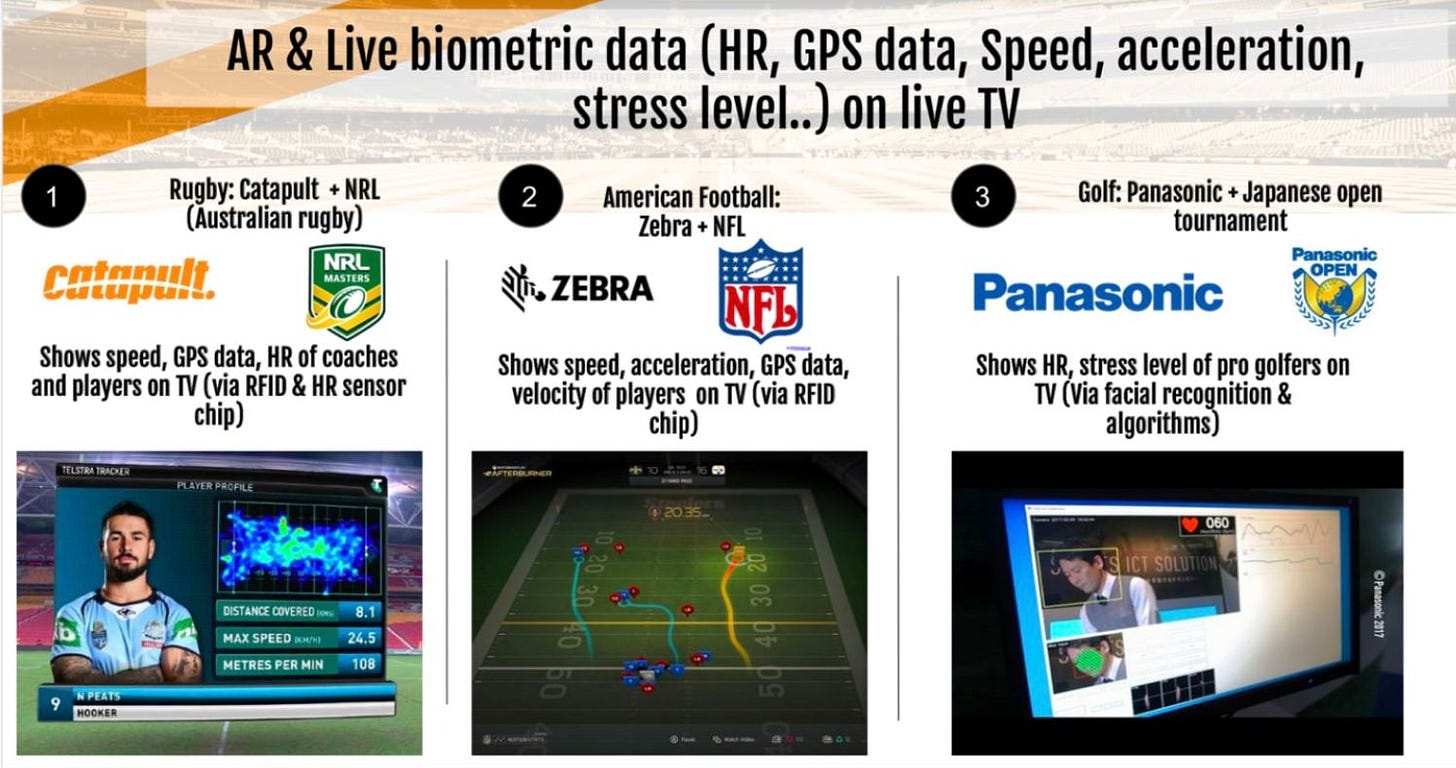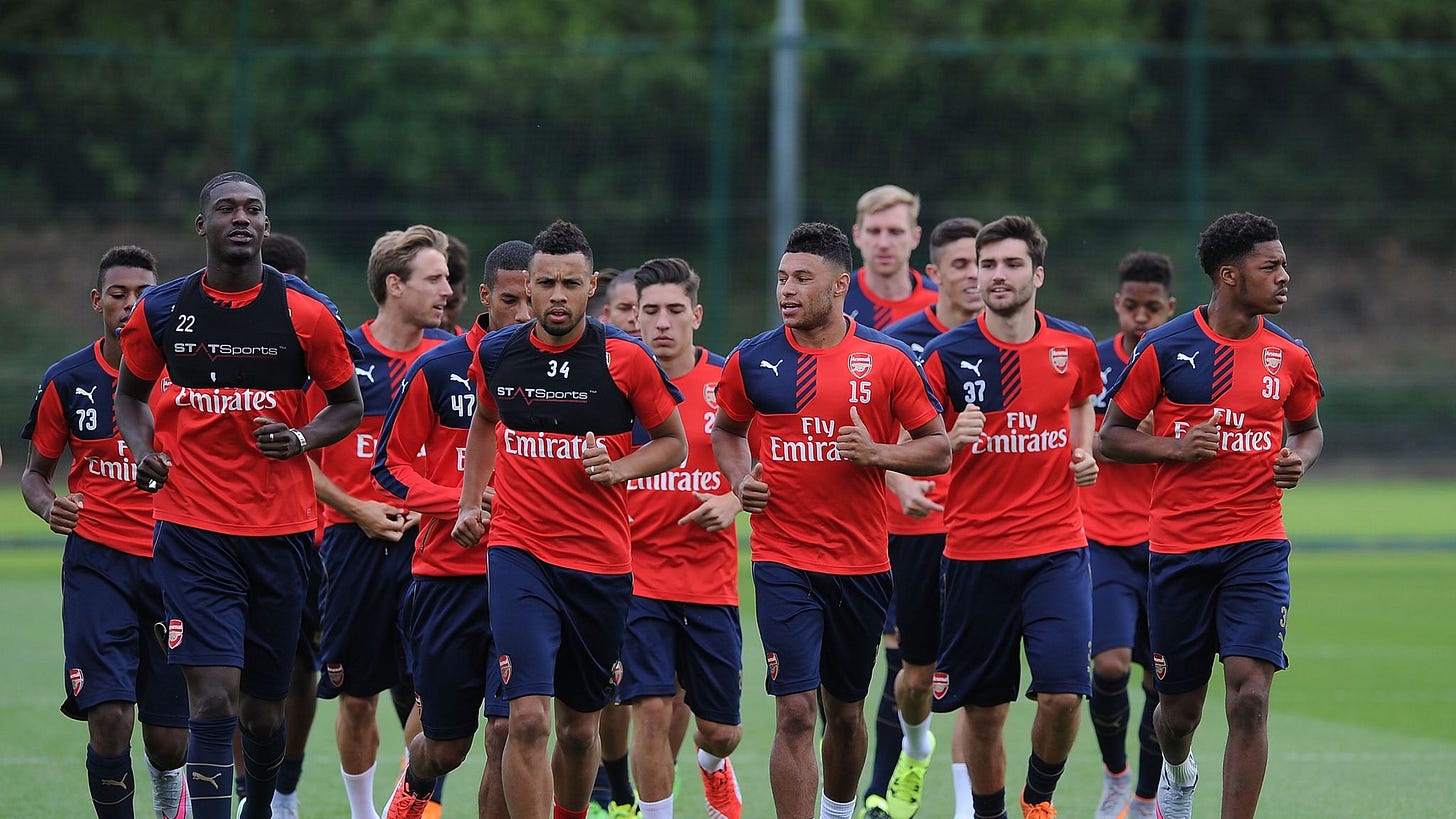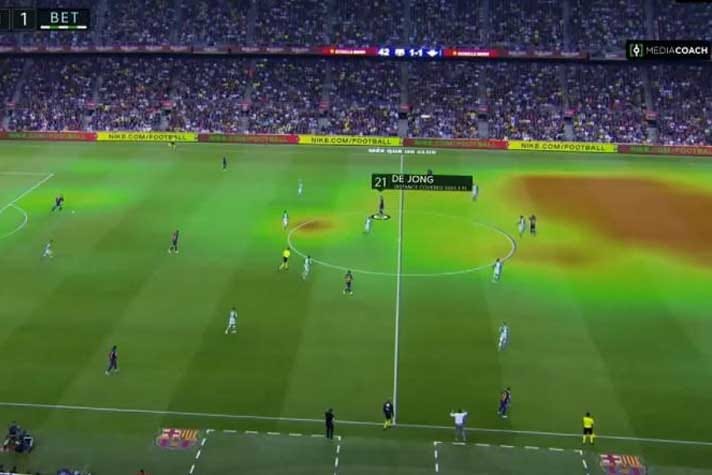⌚⚽ 🏀 Upside Analysis: Sports Leagues' regulation towards wearables (NBA, NFL, MLB, MLS, AFL, Premier League, PGA Tour..) (2nd Edition)
Since 2012, a growing number of sports leagues have started to allow pro teams to use wearable during live games or training in order to track players’ performance data. But not all the leagues are equal in this area. in this analysis we are going to provide an overview of current offline and online rules around the use of wearable data in pro sports.
NFL:
The NFL signed a deal years ago with a company called Zebra to enable NFL teams and broadcasters to use Zebra’s RFID tags in order to capture and track players’ vital stats, indoors and out, to within 6". The NFL is using Zebra MotionWorks™ solution (part of Zebra MotionWorks™ Location Solutions) to enable this type of experience.
Picture: Zebra
Zebra’s Motionworks system is an Active RFID Real Time Locate System (RTLS) which uses tags and receivers to track the players’ performances. Players have two tags embedded under their shoulder pads, which emit a unique electromagnetic wave frequency in order to differentiate each player on the field. The frequencies are collected by multiple receivers to triangulate each player position and then stored in datahubs. The data is instantly analyzed using an advanced algorithm and presented to users who are able to see player location and on-field performance in real time. NFL and Zebra present the data as Next Gen Stats, which includes performance analytics like player speed profiles, fitness graphs, play by play running routes, acceleration, velocity and more. The system is used by all 32 NFL teams and is implemented across 31 stadiums.
Picture: Zebra
Here is a video which further explains how Zebra’s technology works.
Video: Zebra
It is also worth pointing out that typically Zebra shares live sensor data with broadcasters in real time. However, NFL teams only get the data 4 hours after the games.
Source: Upside, The Upside, 2023
Zebra is not the only player in town when it comes to NFL players’ wearable data. Due to a partnership between the NFLPA (NFL Player Association) and Whoop, a sleep tech company from Boston, MA, players also use WHOOP to track their sleep quality. They can also sell their personal data.
Whoop is the first NFLPA partner secured through the OneTeam Collective, which is designed to give innovative companies the opportunity to leverage the NFLPA's exclusive group player rights. As part of the agreement: NFL players own and control their individual data collected with the WHOOP Strap. The Whoop Strap is a fitness tracker that measures players’ sleep (HRV), workout intensity and how their body recovers from their workouts, and provides advice on how to improve all of those areas. The Whoop app also tells players about their sleep, recovery and strain.
Video: Whoop
When it comes to analytics, the NFL also works with various companies. Those include companies such as Kinduct Technologies, which teamed up with Zebra Sports practice system. Concretely, Zebra’s RFID tag system is integrated with Kinduct Athlete Management System for an extended, detailed view into players’ health, wellness and overall performance. This expanded tracking solution with medical and training insights gives coaches, trainers and sports science staff a suite of tools for athlete and team preparation, injury prevention and enhanced performance on the practice field.
Lastly in order to track NFL player’s location, load, NFL teams also use GPS systems from companies such as Catapult. The Cincinnati Bengals, New York Jets, Oakland Raiders, San Francisco 49ers and Tampa Bay Buccaneers are among the teams using Catapult’s global positioning (GPS) and local positioning (LPS) technology to help optimize performance and reduce injury risk among their athletes in both indoor and outdoor environments.
NBA:
The NBA currently does not allow the use of wearables during live games. However D Leagues basketball players are allowed to use wearables during training. In fact today many NBA players often put new wearables on players from the D League in order to test new technologies.
It also worth pointing out that the NBA has an NBA wearable committee comprised of NBA execs whose goal is to evaluate wearable technologies that could be used during live NBA games in the future.
The NBA also has very strict rules when it comes to wearable data. Currently it bans the use of wearable data during NBA players’ contract negotiation. However, the NBA allows the use of camera based technologies from companies such as Second Spectrum.
The D Leagues, also allows the use of sensors into basketballs or shirts. Two companies are leading the way there: Kinexon and ShotTracker. KINEXON’s iBall has a built-in Kinexon chip inside that tracks the movement and speed of the ball, and distributes data in real-time. The players wear KINEXON sensor-embedded jerseys, and their practice session or game is monitored by the coach in real-time.
Video: Kinexon
ShotTracker put sensors into players’ shirts or the ball itself. Through ShotTracker sensors positioned within players' uniforms or the ball itself, the basketballs used in a game and the arena, ShotTracker can evaluate players and possessions. An instant "heat map" can tell coaches where their players have found the most success. It can track the efficiency of a team's offense or defense based on the number of passes that are made on a possession. It can identify the opposing player most likely to sink a crucial free throw in the final seconds of a close game.
Picture: ShotTracker
The NBA’s CBA agreement states that:
Teams may request that, on a voluntary basis, players use the following devices: the FirstBeat Sport system; the Catapult Sports OptimEye, ClearSky, and Vector systems (including with a Polar chest strap but not with the Catapult heart rate vest); the iMeasureU Step Trident system; Kinexon Sports systems (including with a Kinexon heart rate vest paired with a Polar sensor); the ShotTracker system; the Strive Sense3 systems; the WHOOP Performance Strap 2.0; the Zephyr Performance System; and the Oura Ring (collectively, the “Approved Wearables”).
In addition: (i) the only metric categories and/or system variables that Teams can use from Approved Wearables are those that were designated as “Pass” in the wearables validation reports provided to the parties by their jointly retained experts; and (ii) Teams must follow the safety directions of the jointly retained experts as provided to Teams in the Wearable Device Validation Reports. With respect to raw or unprocessed data exports or APIs from Approved Wearables (“Raw Data”), so long as such Raw Data are not provided through a dashboard or other visual within an Approved Wearable’s software platform, the foregoing shall not prohibit Teams from (i) using Raw Data so long as the Raw Data is used in metric categories and/or system variables that were designated as “Pass” in the Wearable Device Validation Reports, or (ii) receiving Raw Data.
According to the NBA’s CBA agreement, NBA players will have full access to all data collected on them. More precisely the NBA’S CBA agreement also states the following:
A player will have full access to all data collected on him from approved Wearables. Members of the Team’s staff may also have access to such data but it can be used only for limited purposes as set forth below. Data collected from a Wearable worn at the request of a Team may be used for player health and performance purposes and Team on-court tactical and strategic purposes only. The data may not be considered, used, discussed, or referenced for any other purpose such as in negotiations regarding a future Player Contract or other Player Contract transaction (e.g., a trade or waiver) involving the player. In a proceeding brought by the Players Association under the procedures set forth in Article XXXI, the Grievance Arbitrator will have authority to impose a fine of up to $250,000 on any Team shown to have violated this provision.
MLS:
Because the MLS is under FIFA’s regulation, MLS players are allowed to wear wearables of their choice. It is up to them. There are no restrictions there. For example, many MLS teams use GPS systems from companies such as Catapult today.
They also use camera based data from companies like Second Spectrum. Leveraging cameras and a cloud-based analytics engine, Second Spectrum captures data on the location of every player, the referees, and the ball 25 times per second. Second Spectrum uses machine learning and artificial intelligence to process the collected data, and can calculate a player’s speed, acceleration, deceleration, and shot velocity, as well as advanced statistics like passing probability and expected goals, in near real-time.
Picture: Second Spectrum
In addition to statistical content, MLS fans can see the new metrics and data visualizations come to life in enhanced highlights that are showcased throughout the season on MLSsoccer.com and the official MLS app.
Lastly, it is worth pointing out that this season, Second Spectrum installed its tracking technology at every MLS stadium.
NHL:
The NHL does not currently allow the use of wearables during live games but only during training. However, it uses a puck tracking technology. The NHL Puck and Player Tracking technology includes 14-16 antennae installed in the arena rafters; four cameras to support the tracking functionality; one sensor placed on the shoulder pads of every player on each team; and 40 pucks manufactured with a sensor inside for each game. The technology is to be deployed in all 31 NHL arenas at some point during the 2019-20 season.
The Puck and Player Tracking system can track pucks at a rate of 2,000 times per second in real-time with inch-level accuracy. The NHL can instantaneously detect passes, shots, and positioning precisely. It can also track players’ movement, speed, time on ice.
Picture: SMT, NHL, 2023
As shown in the picture above and below, the NHL is also visualizing the data on live TV or second screen apps. They are working with companies such as SMT, which integrates the puck and player tracking data into NHL broadcasts. OASIS’s AI engine can detect real-time events (such as face-offs, penalties, and goals) and automatically trigger the OPTICS system to provide virtual graphics within the broadcast (for example, player ID pointers and puck/player trails), as well as dropdown graphics in the mini scorebug graphic.
Picture: NHL, 2020
MLB:
As shown in the table below, when it comes to the use of wearable data, the MLB is one of the most active sports leagues out there. It currently allows 3 wearables to be used during live baseball games. Those include wearables from vendors like Zephyr, Whoop, and Motus.
Source: Upside, 2023
More precisely, the MLB allows the use of Motus Global's motusTHROW, which tracks workload and stress for pitchers.
Picture: Motus
Zephyr's BioHarness is a monitoring system that combines heart rate, respiration, and accelerometry during live games and training.
Source: Zephyr
Two bat sensor systems,Diamond Kinetics' SwingTracker and Easton's Power Sensor Motion by Blast, are also allowed for on-field use during events like batting practice, but not for use in-game. It can also be used in minor-league games.
Source: Easton's Power Sensor Motion by Blast
It is also worth pointing out in the MLB it typically takes 6 to 8 months to get new wearable approved by the MLB wearable committee.
The Major League Baseball is also allowing players to use wearable signal devices to call pitches. The league approved the use of such devices and sent a five-page memorandum to teams’ general managers, assistant GMs, managers and equipment managers outlining the rules regarding such devices. Known as the PitchCom system, the devices were tested in the minors last season and have made their way around the majors during this year’s spring training, drawing glowing reviews. Aimed at improving the pace of play and countering sign stealing — by both legal and illegal means — their adoption addresses two issues that have been hot-buttons in recent years and have resurfaced this spring.
Created by a company called ProMystic that provides modular technology to mentalists and magicians (!), the PitchCom system consists of a push-button transmitter that fits into a wristband worn by the catcher, and receivers that fit into the padding of the catcher’s helmet and the sweatbands of the caps worn by the pitcher and other fielders. In the transmitter’s nine-button grid, each button corresponds to a given pitch type as well as a location, the latter akin to the familiar three-by-three strike zone grid. From the AP report: “four seam high inside, curve hi middle, slider hi outside, change mid inside, sinker middle, cutter mid out, splitter low inside, knuckle lo middle, two seam low outside.” The other three buttons to the left of the grid are to cancel the selection and to adjust the volume up or down.
Source: Upside, 2023
AFL & NRL:
As shown in the table below, similarly to the NFL, the AFL and National Rugby League (NRL) are two of the most innovative leagues when it comes to the use of wearables during live rugby games and the integration with the fans experience. Currently the NRL is using Catapult to share with fans the speed, GPS data, and even HR of coaches and players on TV (via RFID & HR sensors) during live games.
Picture: Upside, 2023
NASCAR:
NASCAR is currently allowing drivers to use several wearables (Misfit, Garmin, Samsung, Polar, TomTom..) during live races. It is also worth pointing out that NASCAR has not allowed the use of HR sensor to show the HR on drivers on TV during live races.
ATP / WTA - Pro tennis:
The ATP and WTA do not allow the constant use of HR sensors during live tennis games. However, it is worth pointing out that the ATP has already done a series of trials and tested wearable technologies over the past few years. For example, in 2017 it used biosensors on players at BNP Paribas and more recently in 2019 at the Next Gen ATP Finals in Milan.
The ATP used wearable devices such as GPS receiver and sensors that measured velocity and direction, acceleration and force, rotation, and body orientation. They also used to quantify internal load by measuring a player’s heart rate.
The ATP’s goal was to quantify the demands of the competition, better understand athlete loading and make performance decisions based on objective data.
It is worth pointing out that the data generated from the device was only available to each player and those that they chose to give access to. The data was displayed in the form of maps showing player movements and actions, while players and coaches got post-match and post-practice reports.
Picture: ATP Next Gen
Premier League:
The Premier League, one of the biggest and most powerful soccer leagues in the world, allows the use of wearable data during live games and training. Like with the NRL and many other leagues throughout the world, teams can use during live games GPS systems from companies like STATSports or Catapult to track players’ load and GPS data. However, the Premier League still does not share with fans players’ live biometric data on TV to enhance the fans experience.
Picture: STATSports, Arsenal FC
FIFA:
The FIFA, the soccer federation that overseas international soccer federations and tournaments, allows the use of wearables during live international soccer games. Like in the MLS, it is worth pointing out that the use of wearables during live games, is the player’s choice. If a soccer player does not want to wear a wearable device during a game, he/she does not have to.
Now the FIFA is also leveraging the players’ wearable data to show select data (distance, GPS..) of players (via SAP, adidas) during live soccer games as a way to enhance the game’s experience.
PGA Tour:
The PGA Tour are allowing the use of wearable (GPS data, Whoop) during live golf tournaments. As shown in the table in the above NRL section, the Panasonic’s golf tournament even went one step further by using facial recognition technology and HR sensor data, and advanced algorithms to show HR and stress level of golfers on live TV.
Picture: Garmin’s GPS watch for golfers
Rory McIlroy and Justin Thomas—both investors in Whoop—wear one on their wrist and arm. Scottie Scheffler does, too, along with countless other players.
Picture: Rory McIlroy, Justin Thomas, using Whoop
Cricket Australia & Indian Premier League:
In the world of pro cricket, wearables are also allowed during live cricket games. For example in pro crickets leagues such as Cricket Australia and the Indian Premier League, cricket players are allowed to use smart cricket bats during live games.
In the ICC Champions Trophy 2017, cricket teams used a smart cricket bat. Concretely, a sensor, exactly the size of a pound or a 50 paise coin is being fitted at the top of the bat handle and it is allowing data to be recorded real time for the batsman taking strike.
The sensor, manufactured by Speculur and Intel Technologies, is allowing for the measurement of bat angles, if it is coming from the right direction for a particular shot, bat speed, velocity, the speed at which the bat is hitting the ball and a lot more.
Picture: Smart cricket bat, 2017
Laliga:
When it comes to technologies LaLiga, the leading soccer league, is one of the most innovative sports leagues in the world. Like with the FIFA, the MLS or the EPL, LaLiga allows players to wear GPS tracking systems (Catapult, STATSports) during live games to measure players’ load and GPS data.
Laliga fans are also able to see players’ data during live soccer games. To do so, the spanish soccer league uses Mediacoach camera technology which offers Laliga club’s support staff the real time match data analytics which can help the team managers and coaches have better control over and change the outcome of a game.
Picture: Laliga’s Mediacoach
According to a new scientific study, Mediacoach’s camera technology in place during the LaLiga games offers the same data accuracy as wearing a GPS device or using motion capture.
Laliga also has a basketball league that has been innovative in this area as well. For example, La Liga basketball league shared during live games the players with the highest average explosive efforts per game so far in the season.
The explosive efforts are the total accelerations, decelerations, and changes of direction at high intensity made by a player during a game, and is an indicator of the agility and explosiveness of the player.
La Liga is also looking to engage fans further during their Top 4 tournament by broadcasting data live during the games, coming on the heels of the State of Origin and Ashes series, where player tracking data was shown on-screen to help tell the story of the physical demands of elite sport.
So what should we expect from some of those sports leagues moving forward when it comes to rules and regulations on the use of wearable data in the coming years?
Here is what we expect to see from leagues such as the NBA, MLS, MLB and NFL in the next 12 to 24 months:
NBA: We expect the NBA to start allowing the use of wearables data during live NBA games within the next 24 months.
MLS & MLB: In the next 24 month, the MLS is likely to start showing live biometric data of players on live TV.
NFL: The NFL does not currently allow the use of players’ biometric data on live TV, but only performance data (speed, velocitiy…). In the next 24 months we expect the NFL to start showing live biometric data (HR.) of players on live TV.
Source: Upside, 2023
Bottom line: In the next 24 months we expect sports leagues to become more innovative when it comes to rules around the use of wearables. We expect wearable companies measuring in real time players’ vitals (HR, Core body temp, sweat volume..) such as Supersapiens, Sm24, Nix Biosensors, Flowbio, and others, to gain even better traction to prevent health issues and do temperature screening. We also expect some leagues to adopt camera based systems (Second Spectrum..) to capture biometric data without having to put wearables on players themselves.
In addition, we also anticipate to see sports leagues leveraging wearable data as a way to better engage with fans. This is important as many sports leagues are now expecting to restart the competition without fans in the stadiums so being able to share players’ wearable data on live TV to create heat maps, engaging content, is likely to be a good way to increase fans engagement during this challenging environment.
Ultimately, using wearable data during live games is about preventing potential health issues of players. Now it is up to each leagues to make some of that data available to the fans. But a revolution around the use of wearable data during live games is coming. Are you ready? We certainly are.
You may also like:
⌚️ 👟 The Sports Wearables Market: Where we are heading.
In the past few years, the world of sports has seen the emergence of a new wave of advanced wearables such as smart patches that can measure hydration or electrolyte, level, smartwatch that can measure blood pressure, or even contactless biosensors capable of measuring HR, blood pressure, sleep quality without any contact to the skin. As shown in the gr…





